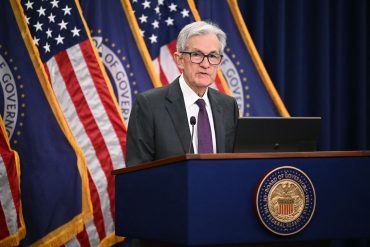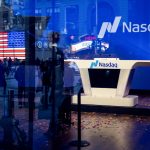
- AI Investment
- Federal Reserve
- Inflation
- Jobs Report
U.S. Jobs Report Expected to Show 118,000 Positions Added in July
6 minute read

Labor market growth shows signs of cooling as U.S. employers navigate economic uncertainty amid manufacturing sector challenges
Key Takeaways
- July employment report anticipates 118,000 jobs added with unemployment potentially rising to 4.2%, marking a key test for Federal Reserve policy decisions amid mixed economic signals.
- Manufacturing sector shows signs of modest recovery with ISM Manufacturing Index forecast to rise to 49.8 from June’s 49.0, though the sector remains in contraction territory.
- Big Tech maintains aggressive AI investment pace with Amazon, Meta, Google, and Microsoft expected to invest over $250 billion in AI infrastructure during 2025, up from $188 billion in 2024.
Introduction
The U.S. economy faces a critical assessment this Friday as multiple economic indicators converge to provide insight into labor market strength and manufacturing resilience. The Employment Report for July, released at 8:30 AM ET, will reveal whether employers added the anticipated 118,000 jobs while potentially seeing unemployment tick up to 4.2%.
These figures arrive at a pivotal moment for Federal Reserve policy considerations, particularly as manufacturing shows tentative signs of improvement. The ISM Manufacturing Index for July is forecast to reach 49.8, representing a modest uptick from June’s 49.0 reading, though still indicating contraction in the sector.
Concurrent data releases including construction spending figures and consumer sentiment readings will provide additional context for economic momentum heading into the second half of 2025.

Key Developments
June’s labor market performance exceeded expectations, with employers adding 147,000 jobs and unemployment dropping to 4.1%. The manufacturing sector, however, continues to face headwinds despite potential July improvements. Manufacturing lost 7,000 jobs in June, contributing to an 89,000 job decline year-over-year in the industry.
Construction presents a mixed picture, with the sector adding 15,000 jobs in June driven by specialty trade contractors. The Dodge Momentum Index grew 6.8% to 225.1, reflecting strong planning activity in data centers, warehouses, and recreational projects. Commercial planning increased 7.3% while institutional planning improved 5.7%.
The automotive industry anticipates July vehicle sales reaching 16.2 million units on a seasonally adjusted annual rate, up from June’s 15.3 million. This projection comes despite the automotive sector reporting job losses in June, reflecting broader private sector weakness.
Market Impact
Technology stocks continue leading market performance, with the S&P 500 information technology sector projected to post Q2 2025 earnings growth of 17.7%. Major tech companies report substantial year-over-year gains, with Google showing EPS growth of 14.8% and revenue up 10.7%, Microsoft posting EPS growth of 14.2% with 14% revenue increase, and Meta delivering 13.9% EPS growth alongside 14.3% revenue expansion.
Semiconductor stocks benefit from AI-driven demand, though the broader chip industry continues recovering from oversupply conditions. Construction spending data shows resilience with an estimated seasonally adjusted annual rate of $2,138.2 billion, despite a 0.3% decline from April’s revised figure.
The construction sector’s unemployment rate decreased to 3.4% due to seasonal demand and public-sector investments, though rising material costs from tariffs present ongoing challenges for profit margins.
Strategic Insights
The divergence between technology sector strength and manufacturing weakness highlights broader economic transformation trends. Companies across industries prioritize AI integration, with hyperscalers demonstrating confidence in long-term returns despite high upfront GPU costs and infrastructure investments.
Manufacturing’s continued contraction signals structural challenges beyond cyclical weakness. The sector faces persistent weak demand and rising costs, while traditional business models undergo disruption from AI-powered automation and evolving supply chain dynamics.
Construction industry momentum in data centers and warehouses reflects underlying digital transformation demands, positioning the sector to benefit from technology infrastructure buildout even as residential and traditional commercial segments face pressure.
Expert Opinions and Data
Industry leaders express cautious optimism about AI investment returns, acknowledging that substantial incremental revenue from generative AI remains emerging. The pace of change forces established companies to rethink traditional business models and invest aggressively in talent, infrastructure, and partnerships.
Construction firm executives remain wary despite positive employment figures, citing ongoing economic uncertainties and potential profit margin impacts from rising material costs. The June U.S. ISM Manufacturing Employment Index reading of 45.0 signals deteriorating labor conditions, contrasting with modest overall index improvements.
Market analysts note competitive pressure intensifying as Big Tech leverages scale and resources to outpace smaller competitors, raising barriers for startups and mid-sized firms. The battle for global market share drives strategic investments, acquisitions, and partnerships to establish international infrastructure and access new markets.
Conclusion
According to Bloomberg, Friday’s economic data releases will provide crucial insight into labor market resilience and manufacturing sector stability as policymakers weigh future monetary policy decisions. The technology sector’s robust financial performance and aggressive AI infrastructure investment contrasts sharply with manufacturing’s ongoing contraction and mixed construction industry signals.
The employment report’s outcome will significantly influence Federal Reserve considerations, particularly given the delicate balance between supporting economic growth and managing inflation concerns. Current economic indicators suggest a bifurcated recovery, with technology-driven sectors showing strength while traditional manufacturing faces persistent headwinds.








